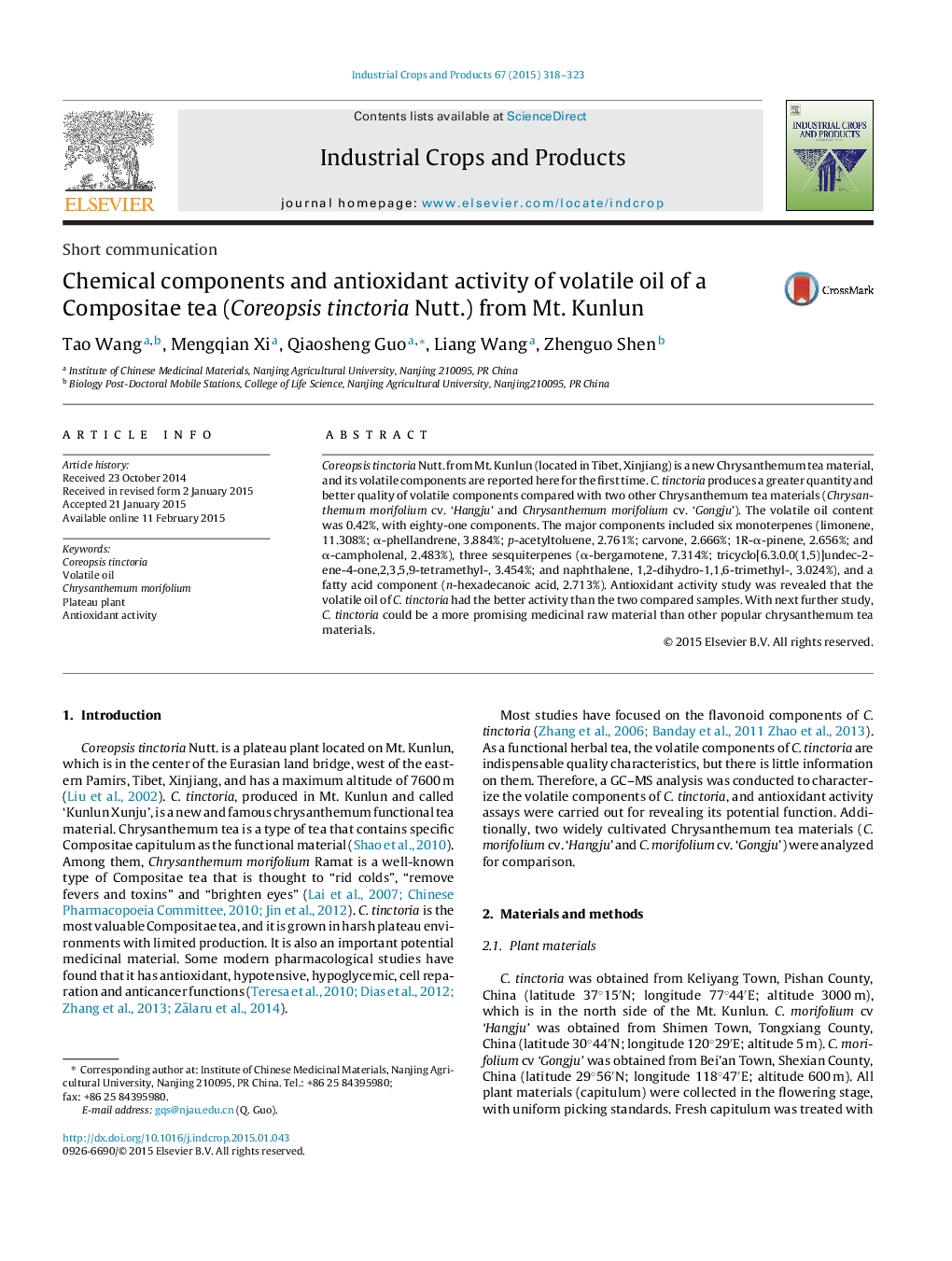| Article ID | Journal | Published Year | Pages | File Type |
|---|---|---|---|---|
| 4513050 | Industrial Crops and Products | 2015 | 6 Pages |
•Eighty-one components were identified from C. tinctoria volatile oil by GC–MS.•C. tinctoria was advantage in quantity and quality of volatile components than other materials.•Main components of C. tinctoria were six monoterpene, three sesquiterpenes and a fatty acid.•Volatile oil of C. tinctoria was with a good antioxidant function.
Coreopsis tinctoria Nutt. from Mt. Kunlun (located in Tibet, Xinjiang) is a new Chrysanthemum tea material, and its volatile components are reported here for the first time. C. tinctoria produces a greater quantity and better quality of volatile components compared with two other Chrysanthemum tea materials (Chrysanthemum morifolium cv. ‘Hangju’ and Chrysanthemum morifolium cv. ‘Gongju’). The volatile oil content was 0.42%, with eighty-one components. The major components included six monoterpenes (limonene, 11.308%; α-phellandrene, 3.884%; p-acetyltoluene, 2.761%; carvone, 2.666%; 1R-α-pinene, 2.656%; and α-campholenal, 2.483%), three sesquiterpenes (α-bergamotene, 7.314%; tricyclo[6.3.0.0(1,5)]undec-2-ene-4-one,2,3,5,9-tetramethyl-, 3.454%; and naphthalene, 1,2-dihydro-1,1,6-trimethyl-, 3.024%), and a fatty acid component (n-hexadecanoic acid, 2.713%). Antioxidant activity study was revealed that the volatile oil of C. tinctoria had the better activity than the two compared samples. With next further study, C. tinctoria could be a more promising medicinal raw material than other popular chrysanthemum tea materials.
